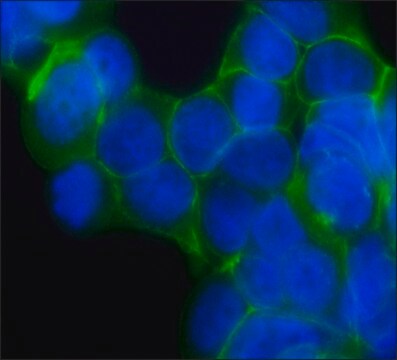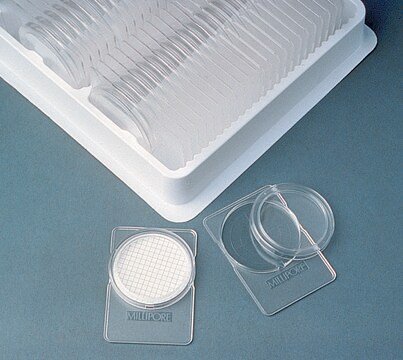05-665-AF647
Anti-Active-β-Catenin Antibody, clone 8E7, Alexa Fluor™ 647
clone 8E7, from mouse, ALEXA FLUOR™ 647
Sinónimos:
Catenin beta-1, Beta-catenin, Active-β-Catenin
About This Item
Productos recomendados
biological source
mouse
Quality Level
conjugate
ALEXA FLUOR™ 647
antibody form
purified antibody
antibody product type
primary antibodies
clone
8E7, monoclonal
species reactivity
human, mouse
species reactivity (predicted by homology)
zebrafish (based on 100% sequence homology), rat (based on 100% sequence homology)
technique(s)
flow cytometry: suitable
immunocytochemistry: suitable
isotype
IgG1κ
NCBI accession no.
UniProt accession no.
shipped in
wet ice
target post-translational modification
unmodified
Gene Information
human ... CTNNB1(1499)
mouse ... Ctnnb1(12387)
rat ... Ctnnb1(84353)
zebrafish ... Ctnnb1(30265)
General description
Specificity
Immunogen
Application
Flow Cytometry Analysis: 0.1 µg of this antibody from a representative lot detected Active-β-Catenin in 1X10E6 A431 and HeLa cells.
The unconjugated version (Cat. No. 05-665) has been shown to work in WB, FC, ICC, IHC, IH(P).
Cell Structure
Adhesion (CAMs)
Quality
Immunocytochemistry Analysis: A 1:100 dilution of this antibody detected Active-β-Catenin in HeLa cells.
Target description
Physical form
Storage and Stability
Other Notes
Legal Information
Disclaimer
¿No encuentra el producto adecuado?
Pruebe nuestro Herramienta de selección de productos.
Storage Class
10 - Combustible liquids
wgk_germany
WGK 2
flash_point_f
Not applicable
flash_point_c
Not applicable
Certificados de análisis (COA)
Busque Certificados de análisis (COA) introduciendo el número de lote del producto. Los números de lote se encuentran en la etiqueta del producto después de las palabras «Lot» o «Batch»
¿Ya tiene este producto?
Encuentre la documentación para los productos que ha comprado recientemente en la Biblioteca de documentos.
Nuestro equipo de científicos tiene experiencia en todas las áreas de investigación: Ciencias de la vida, Ciencia de los materiales, Síntesis química, Cromatografía, Analítica y muchas otras.
Póngase en contacto con el Servicio técnico


